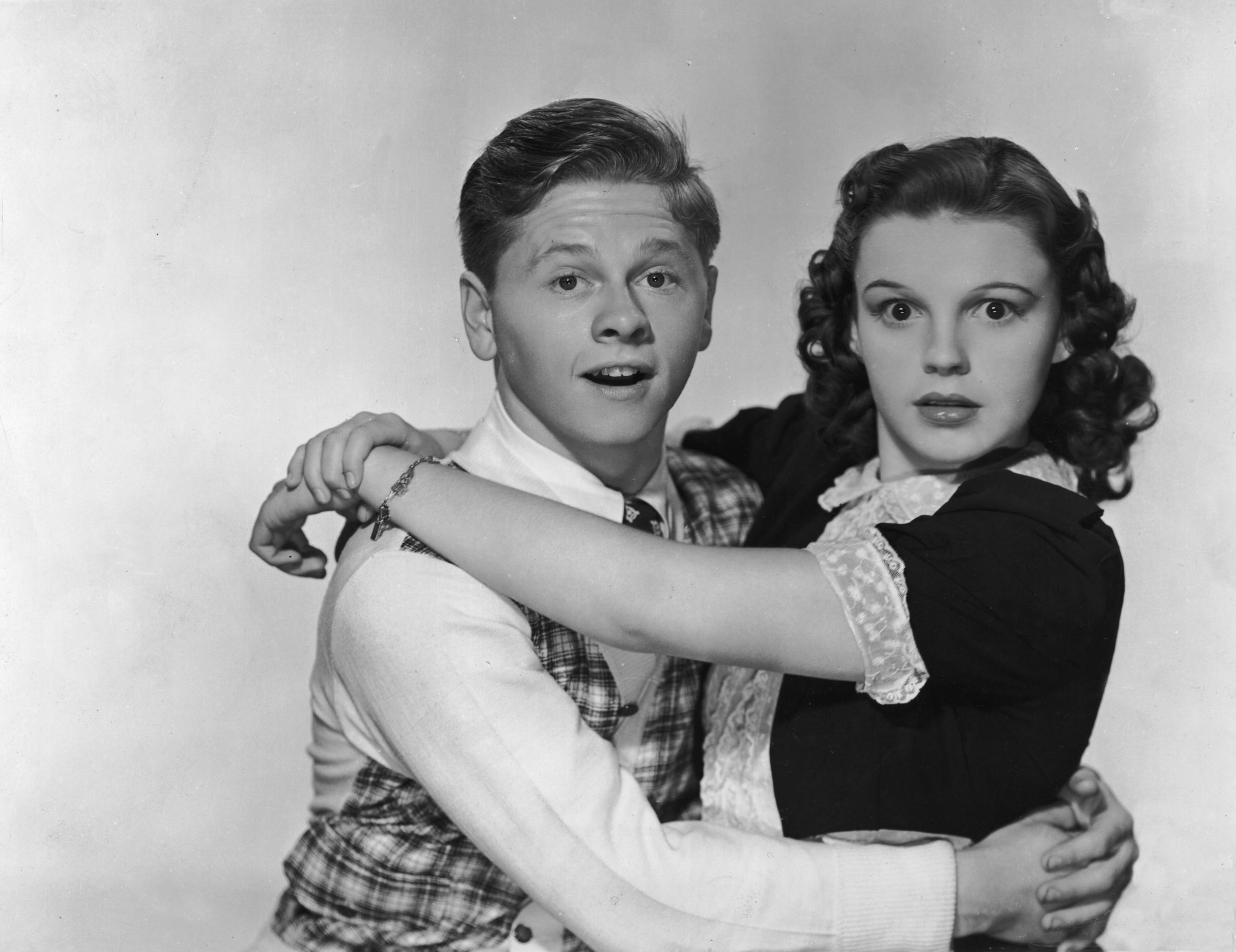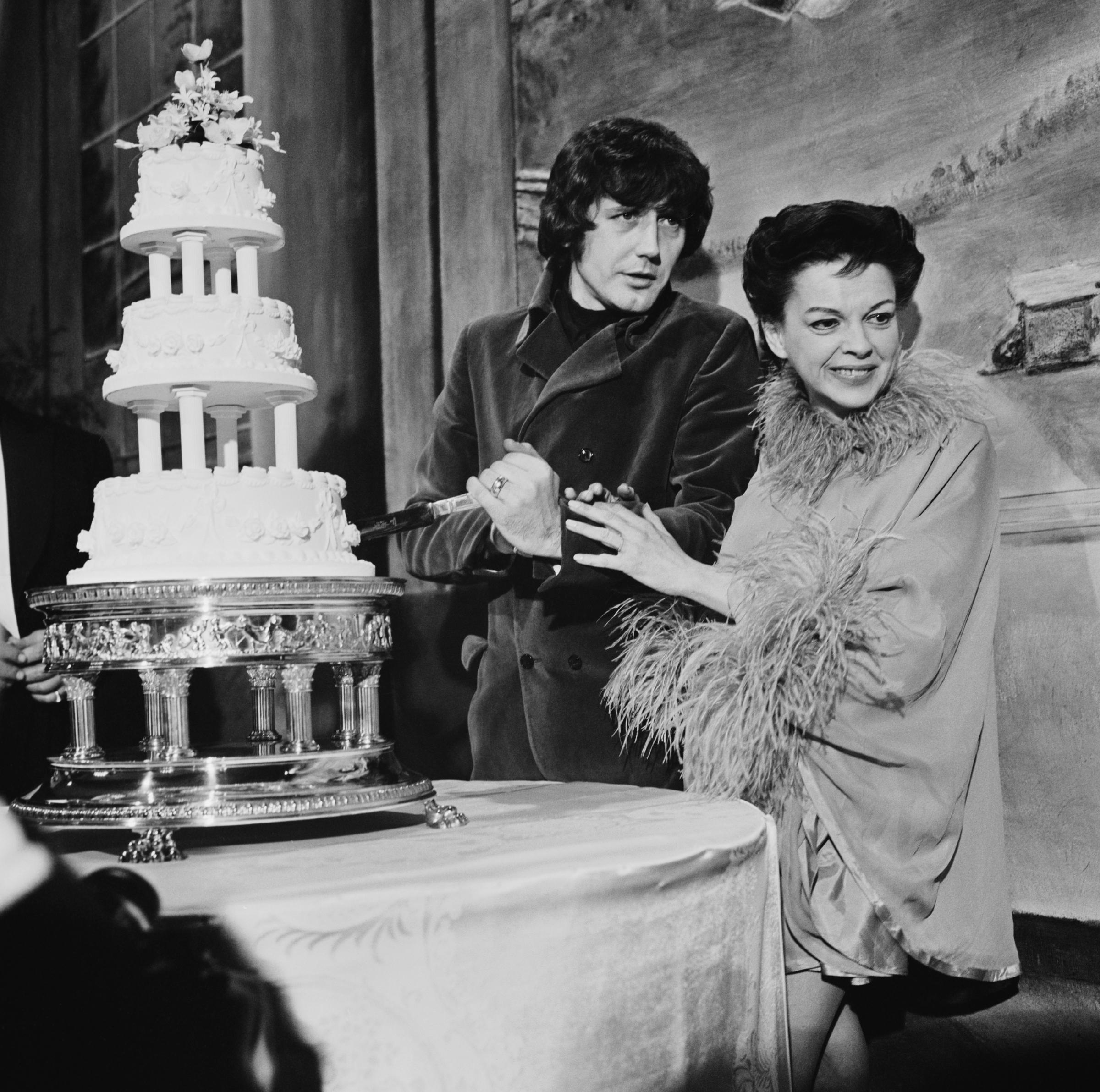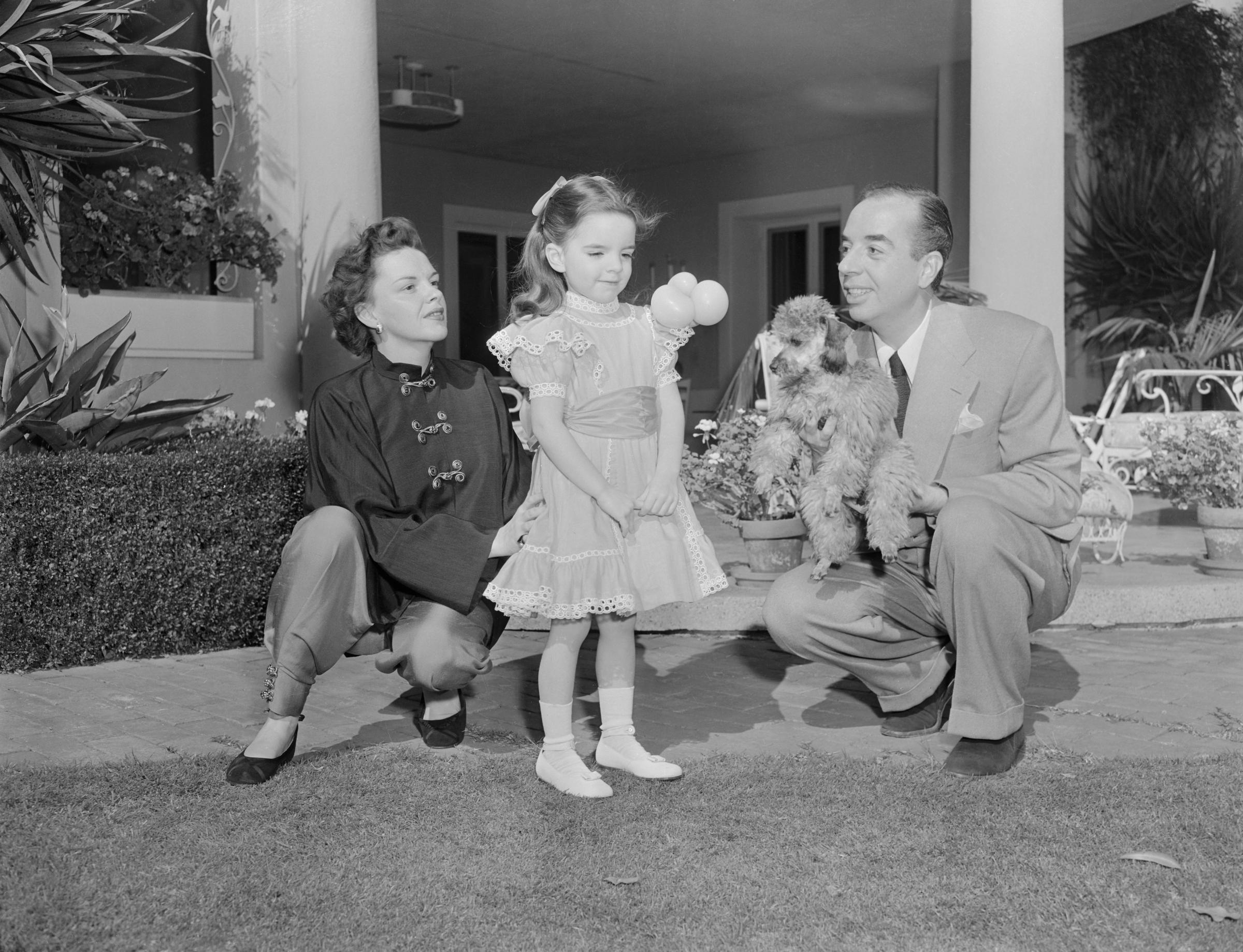In 1968, Judy Garland took on a five-week run of performances at London’s Talk of the Town cabaret club. This run of shows would turn out to be among the renowned performer’s last; she died of an accidental overdose the following year, at 47. The new film Judy, directed by Rupert Goold and starring Renée Zellweger as the eponymous superstar, focuses on this period in Garland’s life. Her career, by this point, had already spanned more than four decades, including her breakthrough role as Dorothy in 1939’s The Wizard of Oz.
But while Garland became an international icon of stage and screen, she also endured several struggles in her personal life, including a reliance on drugs, a string of marriages that ended in heartbreak and challenges with her mental health. As journalist Anne Helen Petersen, author of Scandals of Classic Hollywood: Sex, Deviance and Drama from the Golden Age of American Cinema, writes: “Garland was the first public victim of stardom, and certainly not the last.”
Here’s the true story behind the movie Judy, and the highs and lows of Garland’s life in and out of the spotlight.
She became a child star with MGM, but her success largely robbed her of a childhood
Born Frances Ethel Gumm in Grand Rapids, Minn., in 1922, Garland came from a showbiz family. She was already performing by the age of four, and at 7 she joined the successful singing-and-dancing act her older sisters had cultivated — all at the insistence of their mother, Ethel. The family moved to California in 1926 in search of greater fame for the Gumm sisters, who had, by this time, been reinvented as the Garlands.
It was at 13 that a young Judy would commit to a contract with MGM, one of the world’s biggest film studios. According to Hollywood legend, studio boss Louis B. Mayer signed her on the spot without a screen test. These early MGM days saw the beginning of Garland’s lifelong struggles with addiction, body image and mental health, largely fueled by the studio’s determination to mold her into a profitable box-office star. These difficult times are depicted in flashbacks in the movie; in one, Judy is made to celebrate her 16th birthday two months early, because that’s the only time that will work with her schedule, and she’s not allowed to go anywhere near her cake.
Unlike other glamorous actors of the time, like Lana Turner, Garland was marketed as more of an “ugly duckling,” according to Petersen. Her on-screen storylines and frequent partnership with fellow teen actor Mickey Rooney would often reflect this status, with Garland’s girl-next-door character harboring some kind of unrequited crush on Rooney’s all-American boy. “She didn’t look like the rest of those MGM stars…she becomes this kind of avatar for the rejected, not sexy enough, not pretty enough person,” said Petersen on a 2014 episode of film historian Karina Longworth’s podcast You Must Remember This.

It was widely reported that MGM also used drugs to modulate young performers on set, as depicted in Judy, plying its young actors with “pep pills,” otherwise known as amphetamines, to power them through the exhausting demands of shooting schedules, as well as “downers,” or barbiturates, to force them to get enough sleep. The reliance on drugs, as well as the constant pressure and comments about Garland’s appearance (Louis B. Mayer reportedly nicknamed her “my little hunchback”), led to Garland’s unhealthy relationship with her weight.
In the film, she is photographed sharing a milkshake with Rooney, but she’s not allowed to eat the food on the table between them despite expressing her hunger. Indeed, tabloid gossip magazines reported at the time that studio minders at MGM, as well as Louis B. Mayer himself, insisted that she “reduce.” One widely-circulated anecdote tells of Garland attempting to order a normal lunch at the studio canteen, only to be brought a bowl of soup and a plate of lunch by staff. “My life was a combination of absolute chaos and absolute solitude,” Garland later said, reflecting on her unusual, and troubled, adolescence.
One biography of Garland also alleged that she was sexually harassed by Mayer, starting around the time when The Wizard of Oz was released, when Garland was 16. Using notes from a partial memoir written by Garland herself, former TIME writer Gerald Clarke writes in Get Happy: The Life of Judy Garland that “between the ages of sixteen and twenty, Judy herself was to be approached for sex — and approached again and again,” by Mayer himself and other studio executives.
Garland was married five times
The first of Garland’s five marriages was at age 19, to composer David Rose. Her second was to director Vincent Minnelli in 1945, after he directed her in Meet Me in St. Louis the previous year. The early 1950s brought much change for Garland — she would separate from Minnelli and negotiate a release from her contract at MGM, where her career had been marked by suspensions, publicized suicide attempts and struggles with drugs. She would also meet Sidney Luft, “a somewhat questionable man-about-town with a questionable past,” according to Petersen.
Luft (portrayed in the movie by Rufus Sewell) would become Garland’s manager, engineering her return to the stage and her heralded comeback in 1954’s A Star Is Born, for which Garland received an Academy Award nomination for Best Actress. The pair would separate after 11 years of marriage in 1963. At their divorce proceedings in 1965, Garland accused Luft of domestic abuse and dependence on alcohol, eventually winning custody of their two children Lorna and Joey. By the time of the film’s events, Garland is on hard times financially and must leave her children in order to earn money in London.
After a short-lived marriage to American actor Mark Herron in 1965, Garland met nightclub manager Mickey Deans, portrayed in Judy by Finn Wittrock. In the movie, the pair meets at a party. Deans woos Garland, surprising her in London by hiding under a room-service tray and enjoying a brief romance which quickly turns sour, with Deans trying to make a buck off of having successfully gained entry into her orbit.
In real life, they met when Deans, 12 years Garland’s junior, delivered drugs to her hotel in New York in 1966, and married three years later in London. Deans and Garland’s relationship was reportedly fraught; anecdotes from the time suggested that during her performances in London, he forced her to perform despite her being too unwell to do so. As Judy Garland tribute artist Peter Mac writes, Garland’s daughter Lorna Luft recalled sharing a limousine with Deans after her mother’s funeral in 1969. “He insisted at stopping at a Manhattan office and it became clear to Lorna that he was striking his book deal only hours after her Mother’s services,” writes Mac. Deans’ book, Weep No More, My Lady: The Best Selling Story of Judy Garland, was published in 1972.

She had three children
One scene in the film — the same party at which Garland and Deans meet — shows a light and breezy interaction between Garland and her young adult daughter, Liza Minnelli (Gemma-Leah Devereux). Liza Minnelli is Garland’s only child with her second husband Vincent Minnelli; Garland also had a son, Joey, and a daughter, Lorna, with third husband Sidney Luft. The comparisons between Minnelli and Garland started from an early age. In 1959, when she was 12, she was described by TIME as “strikingly close to being a doe-eyed, wonder-struck replica of her mother.” The pair were close, performing onstage together several times during Garland’s lifetime.
Minelli recalled in a 1970 TIME profile that she went to 14 different schools, her childhood marked by moving from one house to another. “That was probably because Mama was so broke and maybe she owed money to landlords,” she told TIME. She said that she had “a swell time growing up,” and that although there were some hard times financially, she enjoyed her childhood in the company of film stars and moguls of the Hollywood industry through both her mother and father’s connections.

As the eldest child, Minelli also took care of her mother when she was struggling with drugs, alcohol and her mental health. As TIME reported in 1972 in an article about Minnelli’s life, a young Liza would try to talk her mother out of her depressive episodes. “Saving Judy became one of her chores, like washing the dishes or sweeping the kitchen floor. Once a week, she and Lorna would sit down and empty out three quarters of Judy’s sleeping capsules and refill them with sugar,” TIME reported, depicting a kind of role reversal between parent and children. Both daughters would follow in their mother’s footsteps in show business, with Minnelli winning an Oscar for her turn in 1972’s Cabaret.
Fiercely protective of her mother’s legacy, Minnelli distanced herself from the movie. “I do not approve nor sanction the upcoming film about Judy Garland in any way,” she wrote in a statement posted to her social media in June 2018. In a later interview about Judy, Minnelli called Zellweger “a wonderful” actor, adding, “I just hope they don’t do what they always do. That’s all I’ve got to say.”
Garland became a gay icon, particularly later in her career
The film depicts a gay couple, played by Andy Nyman and Daniel Cerqueira, who are dedicated fans and repeat attendees of Garland’s shows. In one especially potent scene, Nyman’s character breaks down in tears after telling his idol about the persecution he and his partner have endured, including jail time for obscenity charges. Their devotion is a moving tribute to the way in which Garland was, and remains, idolized by many gay men.
A 1998 music review in the LGBTQ magazine The Advocate reads, “the name Judy Garland is nearly synonymous with gayness. She is an Elvis for Homosexuals — an icon who transcends music to occupy realms of sheer mythology.” This fanbase was also recognized widely during her lifetime, although often phrased in negative terms; a 1967 TIME article referred to the “hysteria” of both Judy and her gay male fanbase, described as “the boys in tight trousers.”
There are several theories as to what contributed to Garland’s status as a gay icon. According to Richard Dyer, author of Heavenly Bodies: Film Stars and Society, reverence of Garland among gay men took on a new form in 1950, when she broke off her contract with MGM and forged a rejuvenated career off the back of the success of 1954’s A Star Is Born and her on-stage endeavors. Not only did her image “speak to different elements within male gay subcultures,” writes Dyer, but she came to represent “gay men’s resilience in the face of oppression,” stemming from the perception of her as a star who had been knocked down only to triumphantly rise back up again. A comment from one fan, included in Heavenly Bodies, says “her audience, we, the gay people, could identify with her…could relate to her in the problems she had on and off stage.”
Garland’s funeral in New York City has also been cited by many as a cause for the Stonewall Riots, which launched a new wave of LGBT activism. Thousands of fans turned out to pay their respects to Garland at her funeral on June 27, 1969. That night, the popular gay bar the Stonewall Inn was raided by police, as such establishments were commonly targeted during that era; but this time, the patrons fought back. The role that Garland’s funeral played in the Stonewall uprising has been debated for years: Several LGBTQ historians have said that there is a lack of evidence to connect the two events. However, others say that while her funeral may not have directly caused the uprising, the outpouring of grief at her passing heightened emotions among the community. “People who say that it trivializes [Stonewall], to say that it’s connected to Judy Garland, don’t understand how stars and other cultural objects can have tremendous meaning,” Petersen said on You Must Remember This.
She attempted a late-career comeback in London but was already suffering from health issues
Judy focuses on Garland’s comeback performances at London’s Talk of the Town club in early 1968. A review from that time noted that “she evokes pity and sorrow like no other superstar…in her we see the broken remnant of a gaudy age of showbiz which believed that glamour was a good enough substitute for genius.” And although the London show was sold out, the press and her audience didn’t appear to always respond as rapturously as they had earlier in her career. “It turned out to be the biggest flop of her life,” wrote TIME of the London performances a year later in Garland’s 1969 obituary, noting that she was late for performances and looked like a “walking casualty.”
Garland’s shows, which TIME called more “seance” than “concert,” were known for her witty repartee and patter with the audience, in which she would tell them how much she loved them. Judy depicts the highs and lows of these performances in London, from show-stopping song-and-dance numbers like “The Trolley Song” to nights when she mocked audience members and was heckled in return. In the film, the venue booked a back-up performer (Lonnie Donergan, played by John Dagleish) in case Garland wasn’t able to make it onstage.
Toward the end of her life, Garland had lost a great deal of weight, which the international press commented on frequently. In 1959, she was hospitalized after being diagnosed with acute hepatitis and liver problems. She came back from this low; two years later, she gave a legendary appearance at Carnegie Hall, largely regarded as a career highlight. But her addictions, which had plagued her since her days at MGM, would have a lasting effect on her health; one contemporary article noted that she suffered from “exhaustion, kidney ailments, nervous breakdowns, near-fatal drug reactions, overweight, underweight and injuries suffered in falls.” On the morning of June 22, Deans found Garland collapsed in the bathroom of their London house; the death was ruled as an accidental overdose of sleeping pills.
“She let her guard down. She didn’t die from an overdose. I think she just got tired,” Liza Minnelli told TIME in 1972. “She lived like a taut wire. I don’t think she ever looked for real happiness, because she always thought happiness would mean the end.”
More Must-Reads from TIME
- Cybersecurity Experts Are Sounding the Alarm on DOGE
- Meet the 2025 Women of the Year
- The Harsh Truth About Disability Inclusion
- Why Do More Young Adults Have Cancer?
- Colman Domingo Leads With Radical Love
- How to Get Better at Doing Things Alone
- Michelle Zauner Stares Down the Darkness
Contact us at letters@time.com